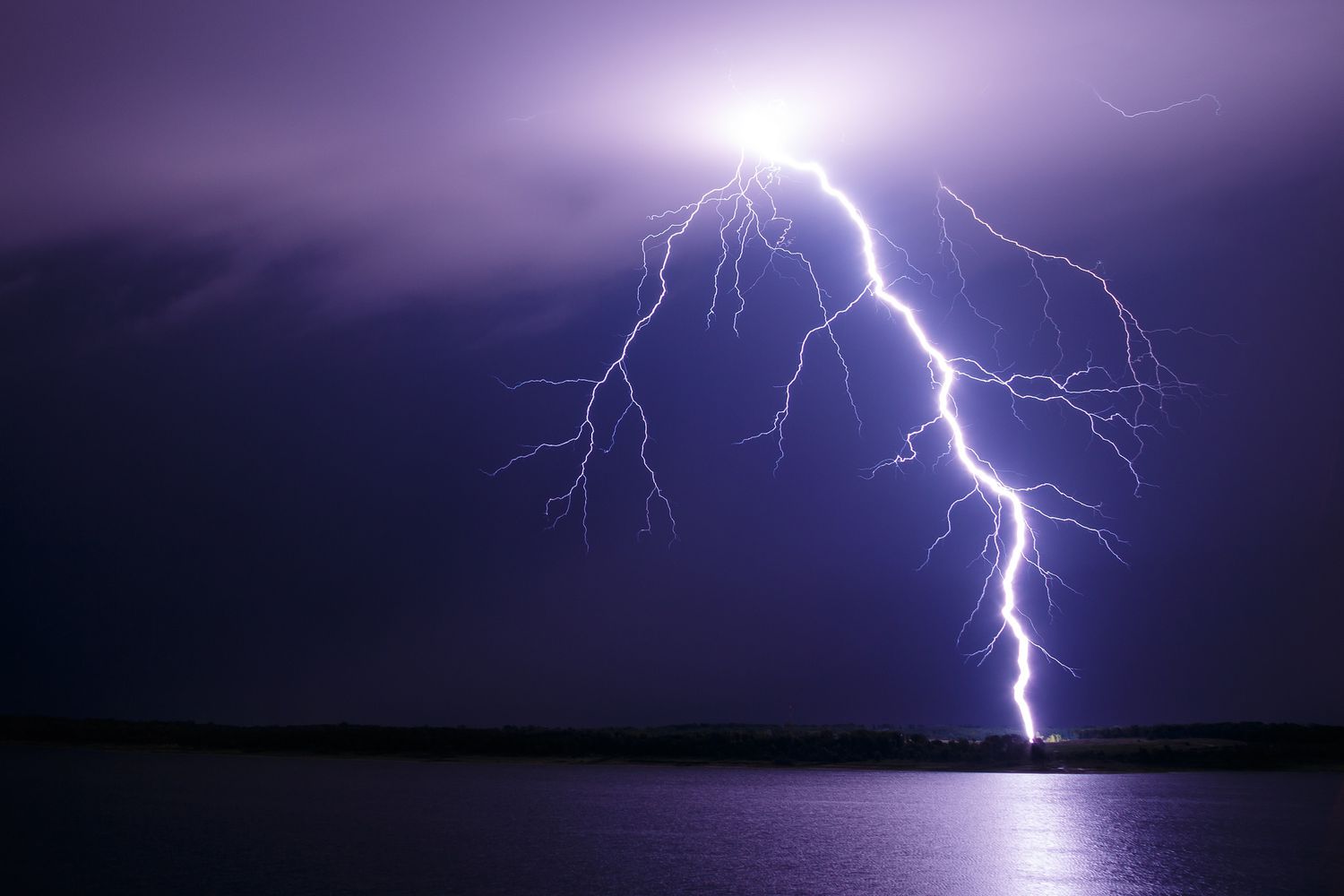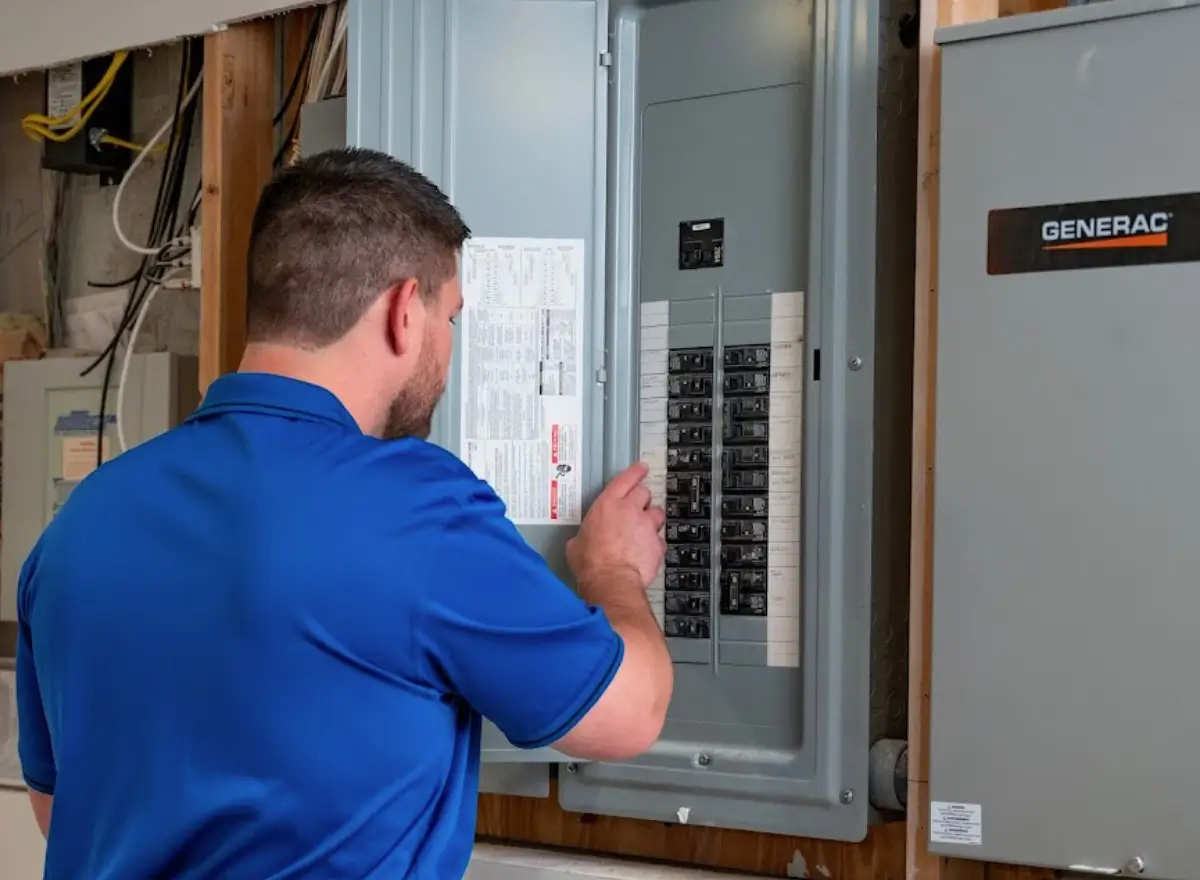HT6. There is one thing you must unplug every time it rains or thunders
Thunderstorms are not only a spectacle of nature but also a significant risk to the electronic devices in your home. Every year, millions of dollars in damages are caused by lightning strikes that trigger power surges, leading to the destruction of sensitive electronics. Understanding the importance of unplugging your electronics during a storm can save you from these costly consequences.
The Risks of Power Surges During Thunderstorms
When lightning strikes, it doesn’t just affect the immediate area—it can cause widespread damage to electronics in your home. A lightning strike near your home can create an electrical surge that travels through the power lines, entering your house’s electrical system and causing a sudden spike in voltage. These spikes can damage or destroy any electronic device plugged into the electrical outlets.
This is why it’s essential to understand the potential harm of power surges caused by thunderstorms. While the risk of a direct lightning strike hitting your home is relatively low, the surge that comes with a strike near your home is a very real threat. These surges can affect a wide range of electronics, including TVs, computers, home appliances, and gaming consoles.

How Surge Protectors Work—and Their Limitations
Surge protectors are designed to protect electronics from power surges by diverting the excess voltage into the ground. However, surge protectors are not infallible. While they can absorb small power surges, they are not designed to withstand the powerful electrical surge created by a nearby lightning strike.
In fact, during a major surge caused by lightning, the voltage can be so high that even the best surge protector will fail. For this reason, relying solely on surge protectors may not be enough to fully protect your devices from lightning-induced power surges. It’s important to be proactive and unplug your devices before a storm reaches your area.

What to Unplug During a Storm
When thunderstorms roll in, it’s wise to unplug any high-value electronics and devices that are particularly sensitive to electrical surges. Here is a list of the most common items to unplug:

- Televisions: Modern flat-screen televisions are expensive and have complex internal circuitry, making them particularly vulnerable to power surges.
- Computers and Laptops: Computers, especially desktops, are packed with sensitive internal components that can be easily damaged by a power surge. Laptops are more portable, but they too are susceptible to damage when plugged in.
- Modems and Routers: A power surge can disable your modem or router, cutting off your internet access for an extended period of time. Since many households rely on Wi-Fi for daily activities, protecting these devices is crucial.
- Gaming Consoles: Gaming consoles such as PlayStation, Xbox, and Nintendo Switch can easily be damaged by a power surge. Given the value of these devices, it’s essential to unplug them during storms.
- Home Appliances: Appliances such as refrigerators, dishwashers, and microwaves are large investments that can be damaged during a power surge. Although they are less likely to be directly affected by lightning strikes, unplugging them can provide an additional layer of protection.
When to Unplug: Timing Is Key
One of the most important factors in protecting your electronics is the timing of when you unplug them. The best time to disconnect your devices is before the storm arrives. If you wait until the storm is already underway, you risk being exposed to the dangers of lightning and electrical shock when you try to unplug your devices.

If you can hear thunder or see lightning nearby, it’s already time to unplug. Don’t wait for the storm to worsen. If you’re uncertain about when the storm will hit, it’s safer to unplug a little earlier than necessary rather than wait until it’s too late. Lightning strikes are unpredictable, and the consequences of waiting too long can be severe.
Important Safety Tip: If lightning is already near, do not attempt to unplug your devices. Lightning can travel through wiring, making it unsafe to touch electrical outlets or wires during a storm. Wait until the storm passes before handling any electronics.
How to Protect Your Electronics Beyond Unplugging
While unplugging your electronics is a key step in protecting them, there are additional measures you can take to safeguard your home and devices from lightning-induced power surges.
- Install a Whole-House Surge Protector: A whole-house surge protector can protect your entire home’s electrical system from power surges caused by lightning strikes. These devices work at the circuit level, providing protection to all of your plugged-in electronics. They are typically installed by an electrician and can be an excellent investment for homeowners who live in storm-prone areas.
- Use Surge Protectors for Individual Devices: For devices that you cannot easily unplug, such as large appliances or hardwired equipment, invest in high-quality surge protectors. These protectors can absorb the surge before it reaches your devices, reducing the risk of damage. Be sure to check the ratings of surge protectors before purchasing, as some are better suited for certain applications than others.

- Install Lightning Rods: For homes in areas with frequent lightning storms, consider installing lightning rods to help divert electrical surges directly into the ground. This can help prevent damage to your home’s electrical system and reduce the risk of fire caused by lightning strikes.
- Regular Maintenance: Surge protectors wear out over time, especially after experiencing a large power surge. It’s important to replace old or outdated surge protectors to ensure they continue to offer protection. Additionally, regular inspections of your home’s electrical system by a professional can help identify potential vulnerabilities and reduce the risk of damage.

Benefits of Being Proactive: Peace of Mind
Taking the time to unplug your electronics during thunderstorms provides several benefits. Firstly, it helps protect your expensive devices from irreparable damage caused by power surges. A lightning-induced surge can permanently destroy sensitive components in a device, leaving you with expensive repairs or the need to replace the entire item. By unplugging, you significantly reduce the likelihood of such damage.
Secondly, unplugging electronics brings peace of mind. Knowing that you’ve taken precautions to protect your electronics from the storm gives you confidence that your investments are safe. It’s a simple habit that can save you from expensive and inconvenient replacements down the line.

Conclusion: A Little Caution Goes a Long Way
While thunderstorms are awe-inspiring, they come with inherent dangers for your home’s electronics. Power surges caused by lightning strikes can destroy sensitive devices, leading to costly repairs or replacements. The best way to prevent damage is to unplug high-value electronics during a storm. Additionally, taking steps to improve your home’s surge protection and installing whole-house surge protectors can offer added security.
By being proactive and unplugging your devices before the storm hits, you can significantly reduce the risk of power surge damage and protect your electronics from lightning strikes. Although this precaution may seem like a small step, it’s one that can save you time, money, and the frustration of dealing with damaged devices.
For more information on protecting your home from lightning strikes and power surges, consider consulting a licensed electrician or surge protection expert to guide you through the best practices for your home.
Sources:
- National Fire Protection Association (NFPA). How Lightning Can Damage Electronics.
Available at: www.nfpa.org - Consumer Reports. How to Protect Electronics from Lightning Strikes.
Available at: www.consumerreports.org















